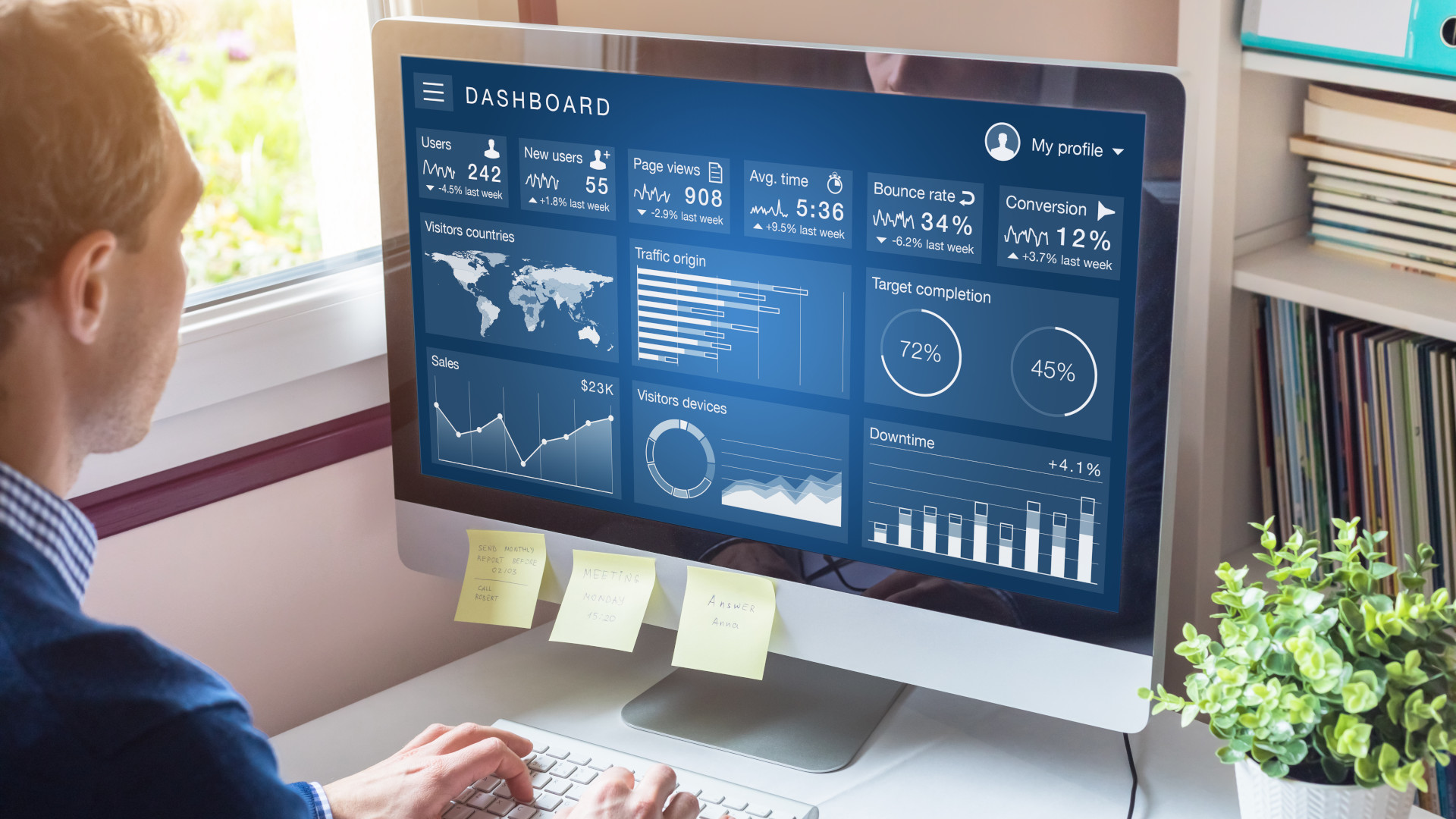How to keep people on your website
Keep your visitor glued to your website and reduce bounce rate

TechRadar created this content as part of a paid partnership with Squarespace. The contents of this article are entirely independent and solely reflect the editorial opinion of TechRadar.
When it comes to running a website, attracting visitors is important, but keeping them engaged is the real challenge.
You have probably spent a lot of time and resources to make your website visually appealing, but how do you keep visitors interested in exploring it further?
Nowadays, the attention span of people has decreased significantly, so you must provide your visitors with enough reasons to stay on your website. Let's discuss a few ways you can captivate your visitors and keep them longer on your website.
Squarespace is a top-rated website building platform Techradar editors praise Squarespace for its beautiful templates and professional features. Visit Squarespace.com to start your free trial.
Ways to keep visitors viewing your website longer
Make your website user-friendly
The first step to keeping visitors on your website is to make it user-friendly. People don't want to spend a long time trying to navigate a complicated website. Make sure your site is easy to read and navigate, with clear menus and a search bar.
Improve your website's loading speed
Sign up to the TechRadar Pro newsletter to get all the top news, opinion, features and guidance your business needs to succeed!
Slow-loading websites can be frustrating for visitors, who will likely move on to another website. Improving your website's loading speed is essential to keep visitors engaged. Some ways to improve loading speed include compressing images, reducing the number of plugins or widgets, and optimizing your website's code.
Add social sharing buttons
Adding social sharing buttons to your website is an excellent way to encourage visitors to stay on your site longer. When visitors enjoy your content, they are likely to share it on their social media accounts, which will bring more visitors to your website.
Optimize for mobile
Mobile devices account for a significant proportion of online traffic. Ensure your website is optimized for mobile. This means ensuring your website has a responsive design, meaning it adjusts correctly for users on various devices. Enhancing mobile accessibility can keep mobile visitors interested and improve the overall engagement on your website.
Quality content
Content is king, and it's the primary factor that takes visitors to your website. To ensure that visitors' interest is constantly piqued, providing them with qualitative content is essential. Engaging and informative content that provides value to the visitors makes them more curious about the product or service. Consistent blogging, updating information, and data accuracy play a key role in keeping visitors interested in your website.
Avoid pop-ups
While pop-ups and other intrusive ads are a common way to generate leads and revenue, they can be frustrating for visitors and can cause them to leave your website. Instead, consider using a lead capture form that blends in with your website's design.
Utilize internal linking
Internal linking is a great way to keep visitors on your website longer. When a visitor clicks on a link, they are taken to a related page or article on your website. That, in turn, prompts them to continue browsing through your content. Ensure that your internal links are relevant and valuable, leading visitors to the essential pages of your website.
Add Images and Videos
One of the best ways to make your website visually appealing is by adding images and videos. Visual content is more engaging and can keep visitors on your site longer. Make sure that the images and videos are high-quality, relevant to your brand or niche, and placed in the right spots on your website. Sliders on your homepage or banners on your product pages are great places to add visual content.
Sources of traffic
Reducing your website’s bounce rate is another great step in improving its overall performance and conversion rate. First, you need to analyze the bounce rates of the different traffic sources. Focus your efforts on improving the bounce rates of the highest converting traffic sources, such as:
- Search engine traffic
- Email marketing campaigns
- Affiliate campaigns
Ignore the bounce rate from unqualified sources, such as:
- Unknown referrer sites
- Social networking sites
- Random directory sites
Testing
How do you know what’s working and what isn’t in terms of keeping visitors on your site?
Answer: you don’t. So assume nothing, and test everything.
Thanks to Google’s Content Experiments (in Analytics), we can create, test and monitor the performance of landing pages. The purpose of testing your landing pages is to reduce bounce rates and increase conversion rates. Setting up an A/B split test on Google Content Experiments is very easy and free. Here’s a basic overview of the steps involved:
- Create a campaign to test landing pages against each other.
- Upload the URL of the original page that you’re testing.
- Upload the URLs of the other landing pages you want to test against the original.
- Copy the JavaScript codes provided by Google and paste them into the relevant pages you’re trying to test. (This requires access to the HTML code of the pages.)
- Send at least 500 visitors to the primary URL and Google will separate those visitors randomly for you to test the performance of the pages in a non-biased way. You can do this by using AdWords, email campaigns or even affiliates to send traffic from specific keywords through the funnel.
Why it’s important to keep people on your website
Improve search engine optimization (SEO)
Search engines, such as Google, use a variety of metrics to determine the quality and relevance of a website. One of the key metrics search engines use is the amount of time visitors spend on your website. If a visitor spends a significant amount of time on your site, it signals to search engines that your site is valuable and contains relevant content. This can help to increase your website’s search engine ranking, which ultimately leads to more traffic.
Increase customer engagement
When visitors spend more time on your website, they’re more likely to engage with your content. This can include reading blog posts, watching videos, or engaging with social media content. Increased engagement helps to build a relationship between your brand and potential customers. The more engaged visitors are with your content, the more likely they are to convert into paying customers.
Reduce bounce rate
The bounce rate is the percentage of visitors who leave your website after only viewing one page. A high bounce rate can be an indication that visitors are not finding what they’re looking for on your website. If your website has a high bounce rate, it could signal to search engines that your website is not valuable and relevant, which can hurt your search engine ranking. By keeping visitors on your website for longer, you can reduce your bounce rate and improve the overall user experience.
Increase revenue
Ultimately, the goal of your website is to generate revenue. The more time visitors spend on your website, the more likely they are to convert into paying customers. If visitors spend only a few seconds on your site and quickly leave, it’s unlikely they’ll make a purchase. By keeping visitors on your website longer, you increase the chances that they’ll make a purchase or become a repeat customer.
Golden rules
Finally, here are some golden rules to remember when you’re designing and testing landing pages:
- No idea is a bad idea until you’ve seen it in action. If you get an idea for a landing page, try it! Try them all.
- Make a different landing page for every keyword that gets at least 500 clicks per month. This ensures your highest converting keywords get all the attention they deserve.
- Send at least 500 visitors from the same traffic source/ keyword to each landing page, to accurately gauge its performance.
- Once you’ve tested several landing pages, try improving them by testing different versions of the best performing pages.
- The best landing pages can then be tested to varying degrees using multivariate testing. This is where you test specific elements of the page rather than entirely new pages.
Creating landing pages that encourage visitors to stay longer can sometimes be time-consuming and expensive, but it’s absolutely essential to high converting, high-performing websites. In the words of Samuel Beckett, “Ever tried. Ever failed. No matter. Try Again. Fail again. Fail better.”
Final thought
Keeping visitors engaged and hooked on your website takes effort, but with the right techniques and tips highlighted in this article, you can achieve it.
Creating engaging content, intuitive navigation, use of social media, and improving website speed can make a substantial difference in keeping visitors on your website. That said, remember to track and measure metrics to adjust the website continually and optimize the user experience.
- We've also featured the best website builder services on the market
Ruby has been a freelance technology writer for over four years and has a passion for information technology and the Internet in its entirety. She has a wide range of specialities including web hosting, streaming (Firestick, Kodi, and APKs), VPN, information technology, and affiliate marketing. Ruby is a graduate of Bachelor of Science in Commerce from the University of the Philippines, and regularly codes in her free time.
